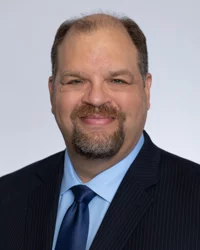When the California Legislature first established a workers’ compensation system in 1913, it was designed to mandate insurance to rapidly provide desperately needed medical treatment and wage loss mitigation to injured workers. In return, injured workers would not be able to sue in civil court and receive massive verdicts that could bankrupt businesses or receive punitive damages or “pain and suffering” beyond the scope of the medical findings.
There were three prongs of the Safety Act of 1913, also known as the Boynton Act. First, it provided compensation to injured workers. Secondly, it required employers to purchase insurance and established a state insurance company, known as the State Compensation Insurance Fund, in case employers could not acquire other insurance coverage. Thirdly, it gave the state power to make and enforce safety rules and regulations, to prescribe safety devices to be used by employees, and to require accidents to be reported.
In other words, the original workers’ compensation program provided an “alternative dispute resolution” program to address the particular needs of workplace injuries. The Boynton act included specific provisions for total temporary disability, medical benefits, permanent disability, and death benefits. It was an exclusive remedy, with minimal exceptions for cases involving gross negligence and willful misconduct.
The Boynton Act was also strongly supported by labor unions which had become much more interested in workplace safety following massive industrial tragedies such as the deadly March 25, 1911 fire at the Triangle Shirtwaist Company in New York City which claimed 146 lives.
Although the workers’ compensation system had significant advantages over civil litigation, by the 1990s, there were substantial bottlenecks in the system. The Appeals Board took months to set matters on calendar over a wide range of issues ranging from medical treatment to competing qualified medical evaluators. Any time there was a dispute, even on relatively simple matters, it could take months to get a hearing and ultimately a decision.
To mitigate these ongoing delays, several state legislatures, including California, developed legislation that would permit labor unions and management to jointly develop “carve out” agreements that resolved disputes outside the state workers’ compensation system with no diminishment of benefits to injured workers.
In California, the Legislature passed Labor Code section 3201.5 covering construction trades and later 3201.7 covering more lines of work, allowing unions to negotiate on behalf of employees and management to develop addendums to collective bargaining agreements that described rules and procedures of alternative dispute resolution programs tailored to the needs of their particular industry.
While programs vary widely, most ADR programs are paid for by a joint labor-management trust and retain ombudspersons who can help resolve disputes informally between the parties, escalate the matter to mediation proceedings, and set arbitrations for unresolved conflicts that require a ruling. A party not satisfied with the arbitrator’s decision can then appeal the matter to the Workers’ Compensation Appeals Board.
In order to make sure that the programs are workable and fair, they must be approved by the California Department of Industrial Relations before going into effect.
Employer and labor unions developed programs in a way that sought to minimize conflicts over medical treatment or medical-legal evaluations through the joint development of medical provider networks (MPNs) and predetermined lists of Agreed Medical Evaluators. They require tight timelines for scheduling mediations and arbitrations, and the fact that only one case is on the docket at a time prevents the distraction element of traditional hearings where litigants may have several cases on calendar at the same time. Predetermined and stipulated medical provider networks keep lien litigation to a minimum and cases can be resolved and closed in a fraction of the time.
With an emphasis on cooperation rather than pursuing a win-lose model, these provisions save insurance companies the costs of extended litigation and provide injured workers with prompt medical care and dispute resolution. It presents both parties with a win-win.
Michael D. Peabody is a partner at Bradford & Barthel’s Woodland Hills office and is director of the firm’s ADR Services Program. He has a certificate in Alternative Dispute Resolution from Pepperdine University School of Law. You can reach him at mpeabody@bradfordbarthel.com or at (818) 654-0411.
Viewing this website does not form an attorney/client relationship between you and Bradford & Barthel, LLP or any of its attorneys. This website is for informational purposes only and does not contain legal advice. Please do not act or refrain from acting based on anything you read on this site. This document is not a substitute for legal advice and may not address every factual scenario. If you have a legal question, we encourage you to contact your favorite Bradford & Barthel, LLP attorney to discuss the legal issues applicable to your unique case. No website is entirely secure, so please be cautious with information provided through the contact form or email. Do not assume confidentiality exists in anything you send through this website or email, until an attorney/client relationship is formed.


